Begonia Sophie Cecile is a captivating and sought-after plant known for its unique characteristics and vibrant presence. Belonging to the Begoniaceae family, this begonia variety is cherished by plant enthusiasts for its stunning foliage and relatively easy care. Named after the renowned horticulturist Sophie Cecile, this begonia boasts a distinctive charm that sets it apart in the world of botanical wonders.
Key Features of Begonia Sophie Cecile:
- Leaves: The leaves of Begonia Sophie Cecile showcase an exquisite pattern, with vibrant shades of green, silver, and sometimes hints of pink. The asymmetrical shape and serrated edges contribute to its visual appeal.
- Size: Typically growing up to 12 inches in height, Begonia Sophie Cecile is a compact plant, making it ideal for both indoor and outdoor settings.
- Blooms: While the primary focus is on the foliage, this begonia can produce delicate pink flowers in certain conditions, adding an extra touch of elegance to its overall appearance.
Fun Fact: Begonia Sophie Cecile is believed to have originated from a chance seedling discovered in the garden of Sophie Cecile in France, leading to its namesake.
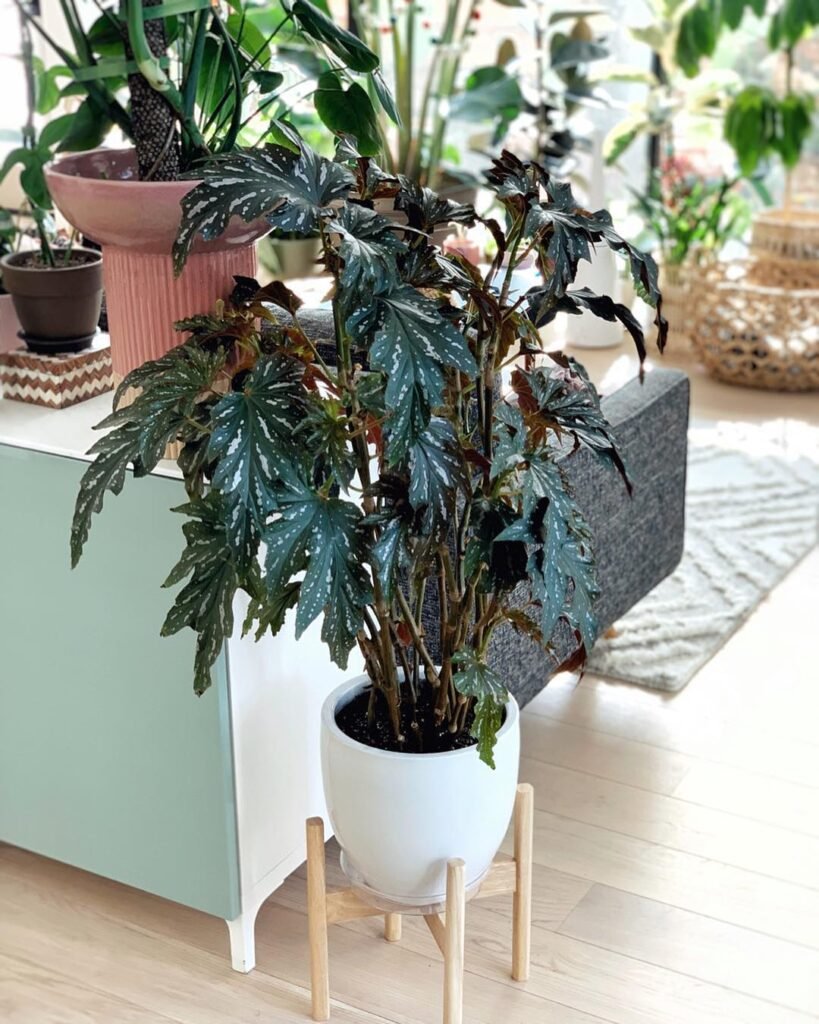

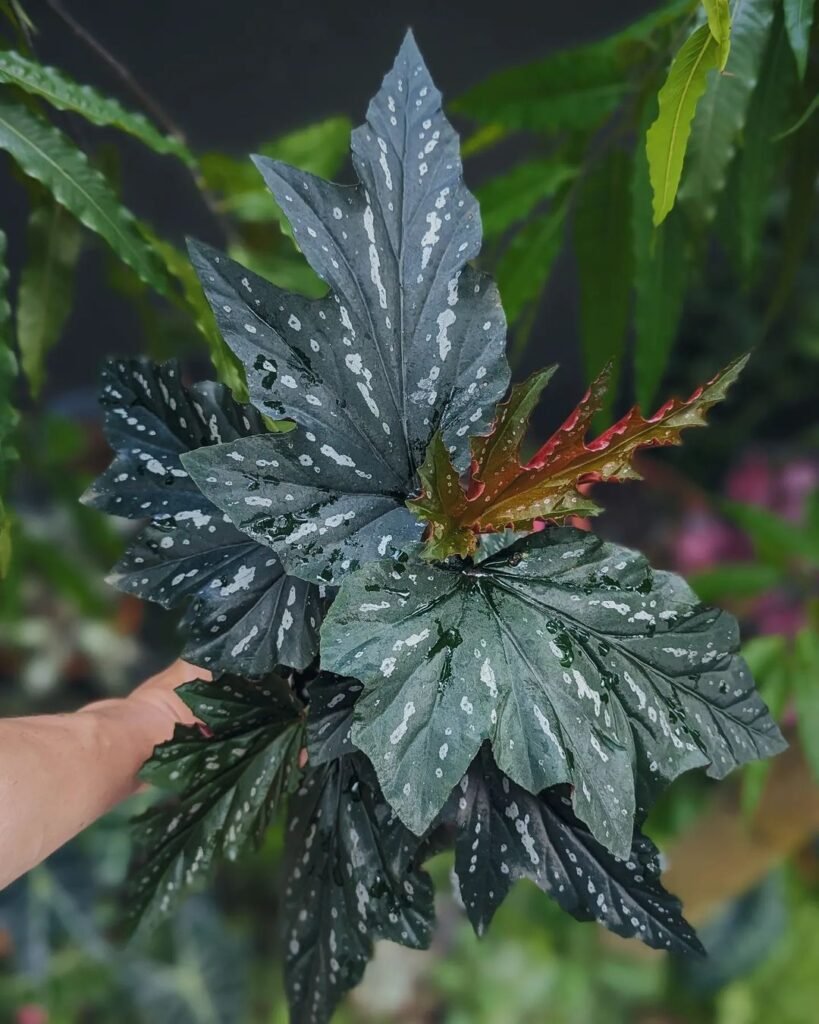
Begonia Sophie Cecile Care Guide Overview
Embarking on the journey of caring for Begonia Sophie Cecile requires understanding its specific needs and providing the right environment for optimal growth. Below is a summarized overview of the care guide, with detailed information in the subsequent sections.
Begonia Sophie Cecile Care Essentials:
| Care Aspect | Requirements |
|---|---|
| Light Conditions | Indirect, filtered sunlight |
| Soil Type | Well-draining, rich potting mix |
| Watering Frequency | Moderate, allow topsoil to dry |
| Humidity Levels | High, misting can be beneficial |
| Temperature Range | 65-75°F (18-24°C) |
| Fertilizing Schedule | Monthly during the growing season |
| Pruning Needs | Light pruning to shape |
| Propagation Method | Stem cuttings |
| Repotting Frequency | Every 1-2 years |
| Seasonal Considerations | Adjust care during extreme seasons |
Genus Species & Appearance


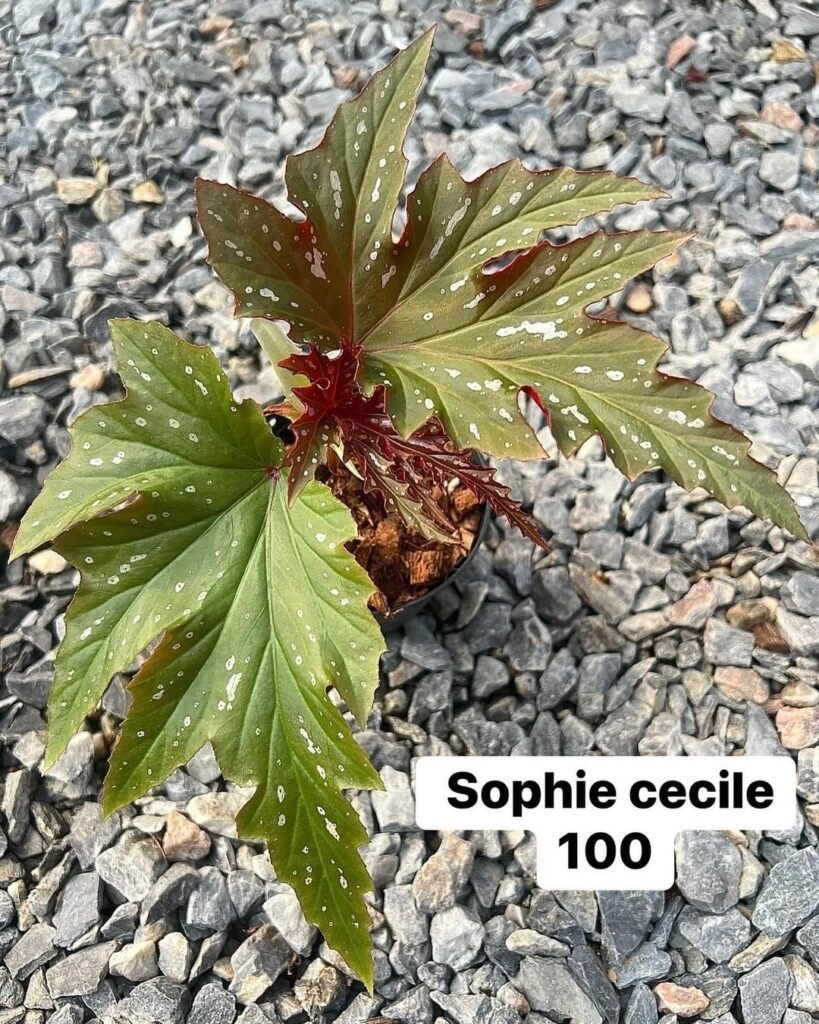
Begonia Sophie Cecile belongs to the genus Begonia, a diverse group of flowering plants encompassing over 1,800 known species. Within this extensive genus, Sophie Cecile stands out with its unique characteristics.
Genus Begonia Overview:
- Diversity: Begonias are known for their diversity, ranging from small, delicate species to large, bold ones. The genus includes both perennial and annual varieties.
- Leaves: One defining feature of Begonias is their asymmetrical leaves, often with intricate patterns and textured surfaces. The leaves of Begonia Sophie Cecile adhere to this characteristic, showcasing a visually appealing arrangement.
- Flower Types: While flowers may not be the primary focus for all begonias, some varieties, including Begonia Sophie Cecile, produce clusters of small, charming blooms.
Understanding the genus Begonia provides valuable insights into the broader family of these plants, setting the stage for more targeted care strategies for Begonia Sophie Cecile.
Not the plant for you? Check out my full list of 78 Types of Begonia!
Light and Soil Requirements
Ensuring the right light conditions and well-suited soil are crucial for the health and vibrancy of Begonia Sophie Cecile. Understanding and meeting these requirements will contribute significantly to the overall well-being of your plant.
Light Conditions:
Begonia Sophie Cecile thrives in indirect, filtered sunlight. While it appreciates bright conditions, direct exposure to harsh sunlight can lead to leaf scorching. Consider placing your begonia near a window with sheer curtains or in an area where it receives gentle, filtered sunlight.
Tips for Light Care:
- Morning Sunlight: Morning sunlight is milder and beneficial for Begonia Sophie Cecile. Position the plant where it can bask in the gentle morning rays.
- Adjust as Needed: Monitor your plant’s response to light and adjust its placement accordingly. If leaves show signs of stress, such as discoloration, consider moving it to a more shaded location.
Soil Requirements:
The soil for Begonia Sophie Cecile should be well-draining and nutrient-rich. A potting mix designed for begonias or a blend of peat moss, perlite, and pine bark works well.
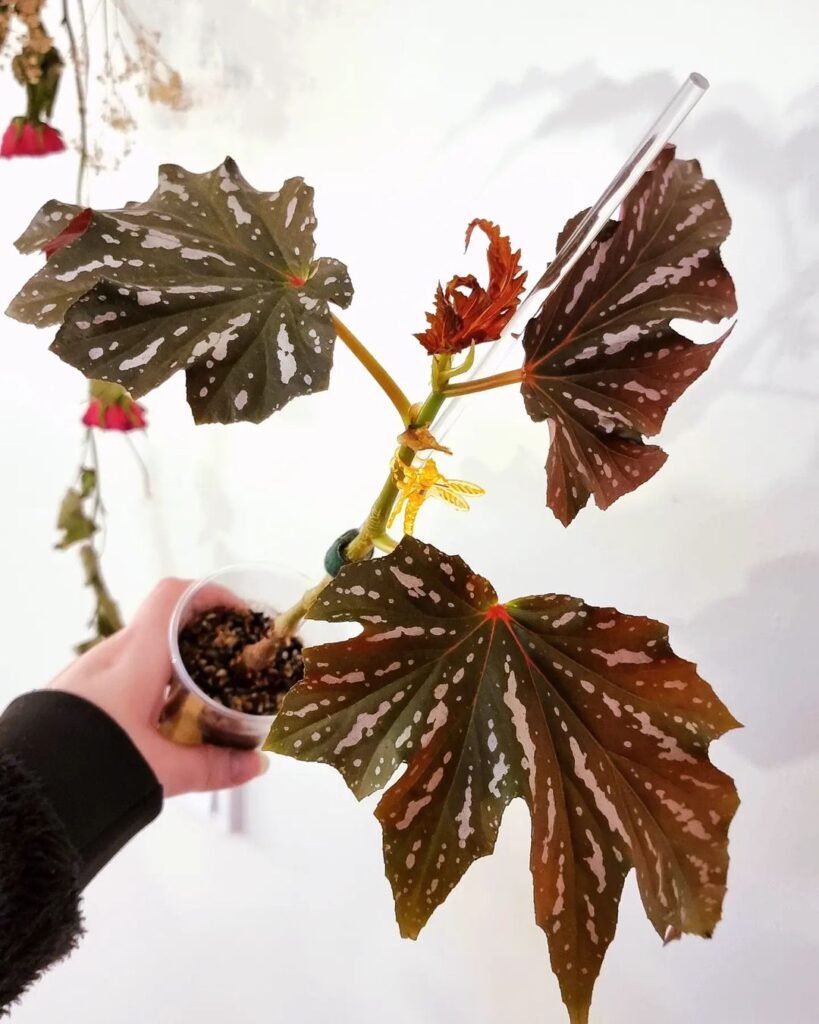
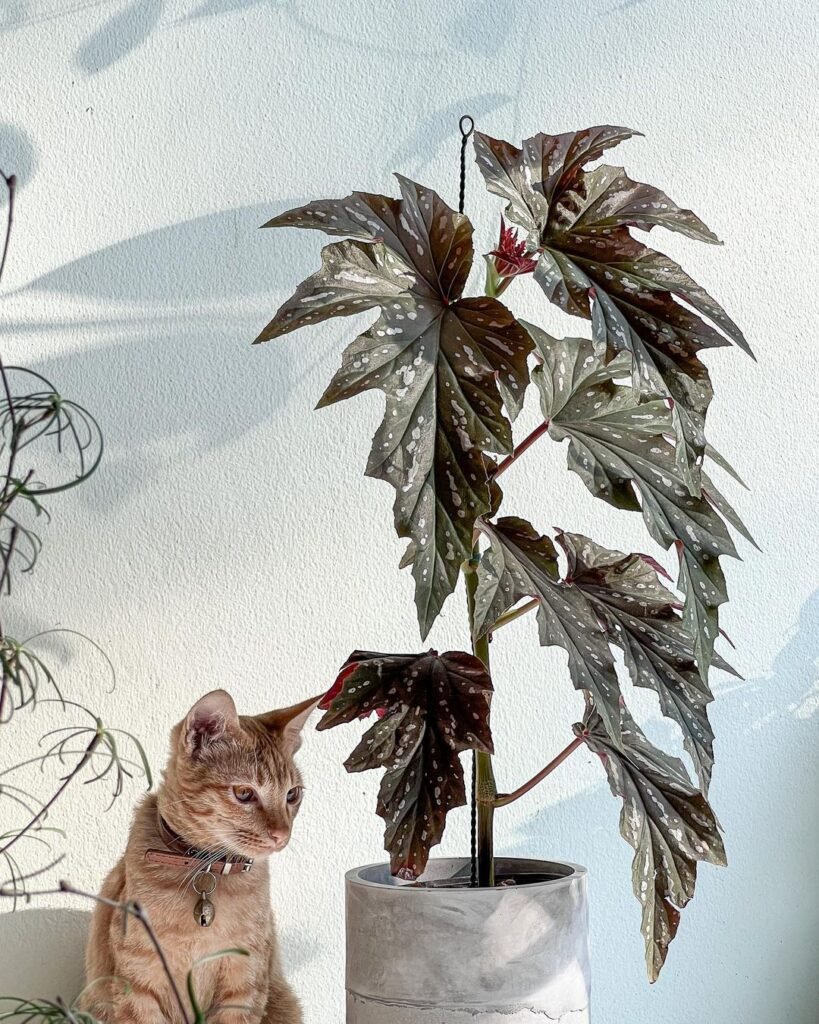
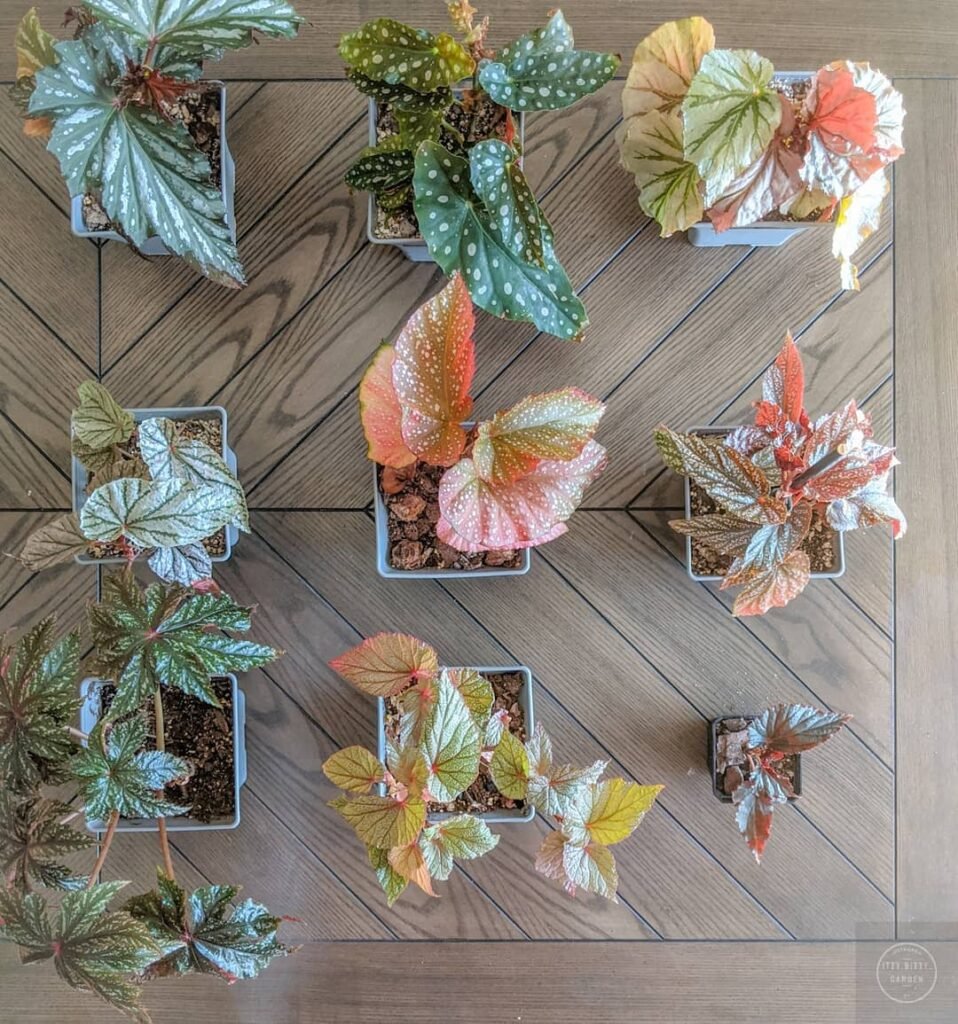
Ideal Soil Conditions
| Soil Component | Proportion |
|---|---|
| Peat Moss | 50% |
| Perlite | 30% |
| Pine Bark | 20% |
Tips for Soil Care:
- Regular Inspection: Check the soil regularly to ensure it remains well-draining. Compacted soil can lead to waterlogged conditions, risking root rot.
- Fertilizer Addition: Supplement the soil with a balanced liquid fertilizer during the growing season to provide essential nutrients.
Watering

Proper watering is fundamental to the well-being of Begonia Sophie Cecile. Striking the right balance and understanding the plant’s moisture needs is key to preventing issues like root rot.
Watering Frequency:
Moderate watering is ideal for Begonia Sophie Cecile. Allow the topsoil to dry out between watering sessions. Insert your finger into the soil; if it feels dry to the touch, it’s time to water.
Tips for Watering:
- Avoid Overwatering: Begonia Sophie Cecile is susceptible to root rot, so it’s crucial to avoid overwatering. Ensure proper drainage in the pot to prevent water stagnation.
- Use Room Temperature Water: Water your begonia with room temperature water to avoid shocking the roots. Cold water can stress the plant.
Humidity and Temperature



Begonia Sophie Cecile thrives in environments with elevated humidity and within a specific temperature range.
Humidity Levels:
Maintain high humidity around the plant, especially if you’re growing it indoors. Misting the leaves regularly or placing a tray of water nearby can create a favorable humid environment.
Temperature Range:
Begonia Sophie Cecile prefers temperatures between 65-75°F (18-24°C). Avoid exposing the plant to extreme temperature fluctuations, as it can adversely affect its growth.
Tips for Humidity and Temperature Care:
- Grouping Plants: Grouping Begonia Sophie Cecile with other plants can create a microclimate with higher humidity.
- Avoid Drafts: Protect the plant from drafts and sudden temperature changes. Keep it away from heaters, air conditioners, or open windows during cold weather.
Fertilizing
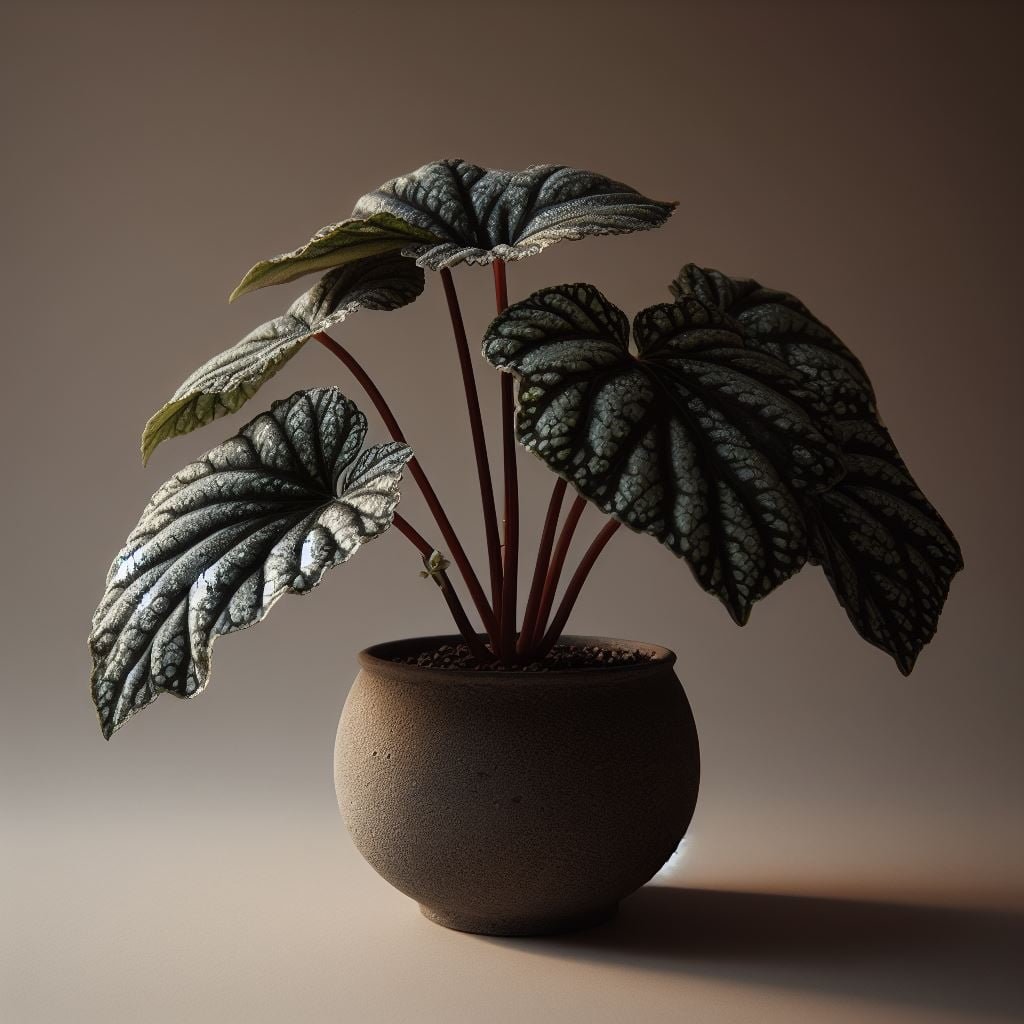
Proper fertilization is vital to support the growth and well-being of Begonia Sophie Cecile. Understanding the nutrient needs and establishing a consistent fertilizing routine will enhance the overall health and vibrancy of this captivating plant.
Fertilizing Schedule:
Begonia Sophie Cecile benefits from a monthly dose of balanced liquid fertilizer during the growing season. This typically spans from spring through early fall when the plant is actively growing. Ensure that the fertilizer is diluted to half or a quarter of the recommended strength to avoid over-fertilizing, which can lead to nutrient imbalances.
Fertilizing Schedule
| Month | Fertilizer Application |
|---|---|
| Spring | Balanced liquid fertilizer |
| Summer | Balanced liquid fertilizer |
| Fall | Balanced liquid fertilizer |
| Winter | No fertilizer |
Tips for Fertilizing:
- Read Labels: Follow the instructions on the fertilizer label for proper dilution and application rates.
- Monitor Growth: Adjust the fertilizing frequency based on the plant’s growth. If it’s thriving, continue with the established schedule; if growth is slower, consider reducing the frequency.
Pruning and Shaping
Pruning plays a crucial role in maintaining the shape and overall aesthetics of Begonia Sophie Cecile. While this begonia variety is relatively compact, occasional pruning helps control its size and encourages bushier growth.
Pruning Needs:
Perform light pruning as needed to remove leggy or damaged stems and encourage a fuller, more compact form. Use clean, sharp scissors or pruning shears to make precise cuts just above a leaf node.
Tips for Pruning:
- Regular Inspection: Regularly inspect your Begonia Sophie Cecile for any dead or yellowing leaves. Prune these away to promote a healthier plant.
- Shaping: If you desire a specific shape or size for your begonia, prune accordingly. However, avoid drastic pruning, as begonias may take some time to recover.
Propagation and Repotting
Propagation allows you to expand your collection of Begonia Sophie Cecile, while repotting ensures the plant has adequate space for continued growth. Understanding the proper techniques for propagation and repotting is essential for the longevity of your plant.
Propagation Method:
Begonia Sophie Cecile is commonly propagated through stem cuttings. Here’s a step-by-step guide to successful propagation:
- Select a Healthy Stem: Choose a healthy stem with at least two leaves.
- Cutting Preparation: Make a clean cut just below a leaf node using sharp scissors or pruning shears.
- Rooting Medium: Place the cutting in a well-draining rooting medium, such as a mix of perlite and peat moss.
- Provide Indirect Light: Keep the cutting in a location with indirect light and maintain high humidity until roots develop.
Repotting Frequency:
Begonia Sophie Cecile generally benefits from repotting every 1-2 years. This allows for the refreshment of soil, inspection of root health, and provides the plant with additional space for growth.
Tips for Propagation and Repotting:
- Timing Matters: Propagate during the growing season for optimal success. Repot in spring when the plant is entering a period of active growth.
- Gentle Handling: Handle the roots and stems with care during both propagation and repotting to minimize stress on the plant.
Seasonal Care
Adapting your care routine to the changing seasons is crucial for the well-being of Begonia Sophie Cecile. Each season brings unique challenges and opportunities for your plant, and understanding how to adjust your care approach accordingly ensures its continuous health and vitality.
Seasonal Considerations:
Spring:
- Light: With the arrival of spring, gradually reintroduce Begonia Sophie Cecile to brighter light conditions as the intensity of sunlight increases.
- Fertilization: Resume regular fertilization with a balanced liquid fertilizer to support the plant’s growth during this active period.
Summer:
- Temperature Management: Shield your begonia from extreme heat by providing filtered shade during the hottest part of the day.
- Hydration: Increase watering frequency slightly, keeping the soil consistently moist but not waterlogged.
Fall:
- Transition to Lower Light: As days shorten, acclimate your plant to lower light levels to mimic its natural environment.
- Reduce Fertilization: Slow down on fertilizing as the plant’s growth naturally slows during the fall season.
Winter:
- Protect from Drafts: Shield Begonia Sophie Cecile from cold drafts and temperature fluctuations, as it is more sensitive to cooler conditions.
- Reduce Watering: Decrease watering frequency, allowing the topsoil to dry out more between waterings.
Companion Plants
Choosing the right companion plants for Begonia Sophie Cecile can enhance the aesthetic appeal of your garden or indoor space. Complementary plants that share similar care requirements can create a harmonious and visually pleasing environment.
Ideal Companion Plants
| Companion Plant | Characteristics |
|---|---|
| Ferns | Shade-tolerant, complement Begonia Sophie Cecile’s foliage |
| Calathea | Similar humidity preferences, adds variety in leaf shapes |
| Hosta | Thrives in shade, complements begonia’s compact form |
| Ivies | Trailing habit, adds dimension to the planting |
Tips for Companion Planting:
- Similar Care Needs: Choose companion plants with similar light, water, and humidity requirements to simplify care routines.
- Contrasting Textures: Mix plants with different leaf textures and sizes to create visual interest and balance.
If you’re thinking of extending your begonia plant family, I recommend reading up on begonia palmata and begonia thurstonii. They both make great additions to your squad!
Pest Control Tips
While Begonia Sophie Cecile is relatively resilient, it’s not immune to pests. Implementing effective pest control measures is essential to prevent infestations and maintain the health of your begonia.
Common Pests:
- Spider Mites: These tiny pests thrive in dry conditions. Regularly misting the plant can deter them.
- Aphids: Keep an eye out for clusters of small insects. Insecticidal soap is an effective remedy.
- Mealybugs: White, cotton-like masses on your begonia indicate mealybug presence. Remove them manually or use neem oil.
Tips for Pest Control:
- Regular Inspection: Routinely check the undersides of leaves and along stems for any signs of pests.
- Natural Remedies: Consider using natural remedies like neem oil or a mild soapy water solution before resorting to chemical pesticides.
Reviving a Sick or Wilting Begonia Sophie Cecile
Ailing begonias can often be nursed back to health with proper care and attention. Understanding the common reasons for a sick or wilting begonia and implementing corrective measures promptly can make a significant difference in its recovery.
Signs of Stress:
- Yellowing Leaves: This could indicate overwatering or insufficient light.
- Wilting: Underwatering, root issues, or extreme temperatures may cause wilting.
Recovery Steps:
- Adjust Watering: Evaluate the moisture level in the soil and adjust watering frequency accordingly.
- Inspect Roots: If wilting persists, gently remove the plant from its pot and inspect the roots for signs of rot. Trim away any unhealthy roots and repot in fresh soil.
Tips for Recovery:
- Isolate the Plant: If ailing, isolate Begonia Sophie Cecile to prevent the spread of potential pests or diseases.
- Gradual Rehabilitation: Gradually reintroduce the plant to its regular care routine, avoiding sudden changes.
Conclusion
In conclusion, cultivating and caring for Begonia Sophie Cecile can be a rewarding and enjoyable experience for plant enthusiasts. This unique begonia variety, with its captivating foliage and relatively manageable care requirements, adds a touch of elegance to both indoor and outdoor spaces. By understanding its specific needs for light, soil, water, and seasonal adjustments, you can foster a thriving and visually stunning Begonia Sophie Cecile.
Remember to regularly monitor your plant, adapting care routines based on its growth and seasonal changes. Whether you’re a seasoned gardener or a beginner, the beauty of Begonia Sophie Cecile lies not only in its aesthetic appeal but also in the joy it brings as it flourishes under your attentive care.
FAQs
Is Begonia Sophie Cecile suitable for beginners?
Yes, Begonia Sophie Cecile is generally considered suitable for beginners. While it has specific care requirements, they are manageable with a bit of attention to light, soil, and watering needs. Monitoring the plant’s response and making adjustments accordingly will contribute to its well-being.
Can Begonia Sophie Cecile tolerate direct sunlight?
Begonia Sophie Cecile prefers indirect, filtered sunlight. While it can tolerate some morning sun, direct exposure to harsh sunlight, especially in the afternoon, can lead to leaf scorching. Providing a shaded or filtered light environment is ideal for this begonia.
How often should I fertilize Begonia Sophie Cecile?
During the growing season, which spans from spring to early fall, fertilize Begonia Sophie Cecile monthly with a balanced liquid fertilizer. Dilute the fertilizer to half or a quarter of the recommended strength to prevent over-fertilization. In the winter, when the plant is not actively growing, avoid fertilizing.
Can Begonia Sophie Cecile be grown outdoors?
Yes, Begonia Sophie Cecile can be grown outdoors, but it is essential to provide it with the right conditions. Ensure it receives filtered sunlight, and protect it from harsh weather conditions, especially extreme heat and cold. Planting it in well-draining soil and providing proper humidity will contribute to its outdoor success.
How do I revive a wilting Begonia Sophie Cecile?
If your Begonia Sophie Cecile is wilting, first assess its watering conditions. Adjust the watering frequency based on the moisture level in the soil. If the issue persists, carefully inspect the roots for signs of rot, trim away any unhealthy roots, and repot the plant in fresh soil. Gradually reintroduce it to its regular care routine to aid in recovery.

Writer/Green Thumb/Explorer – Rooted deep in the rich soils of Devon, I’ve cultivated a vast expertise in plant care, helping greenery thrive in homes across the UK. When I’m not crafting detailed plant care guides, I’m journeying through the lush landscapes of the West Country, unearthing nature’s secrets and sharing them with fellow plant enthusiasts. Every leaf has a story, and I’m here to tell it.





